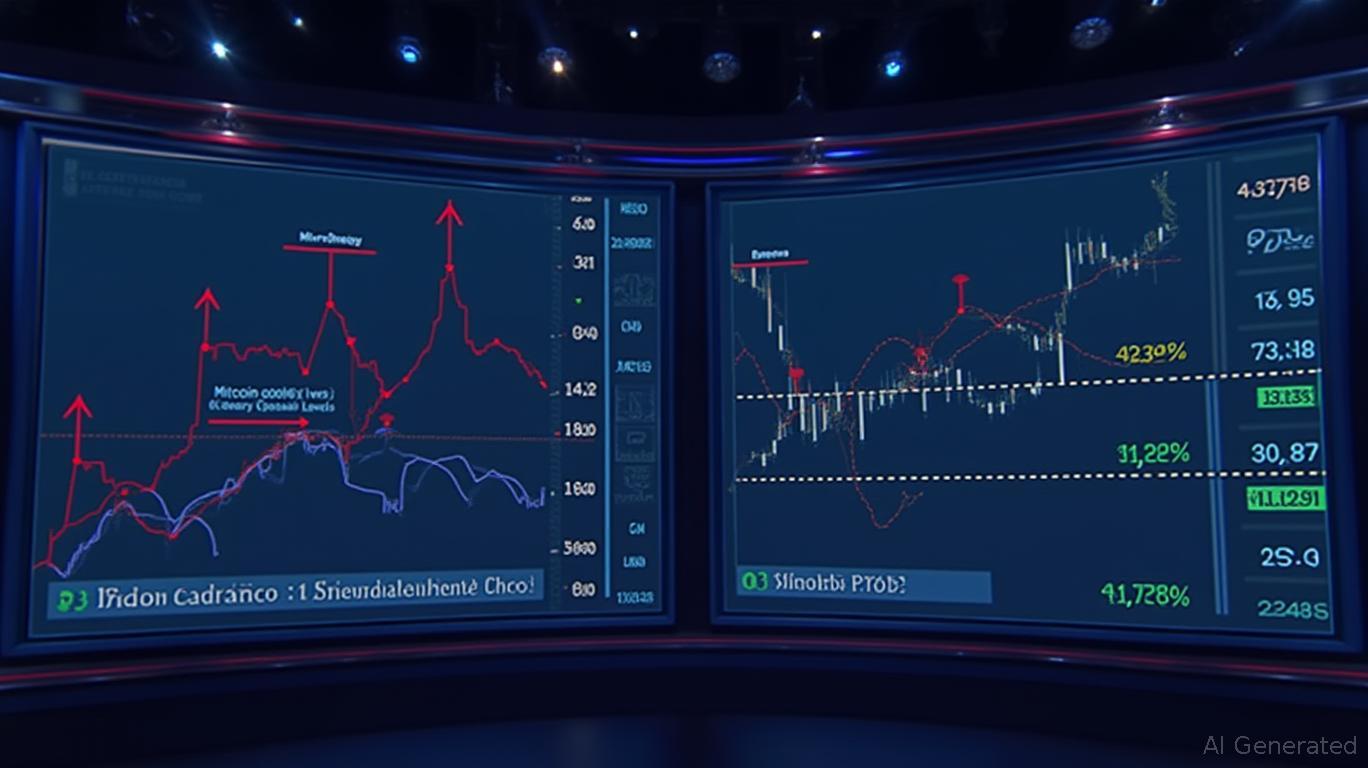MicroStrategy's Bitcoin Treasury Gambit: Can Leverage and Luck Outrun the Bear?
The crypto markets are in a state of perpetual flux, but one institution has doubled down on Bitcoin (BTC) with relentless precision.
, now rebranded as Strategy, just completed its eighth consecutive week of Bitcoin purchases, acquiring an additional 705 BTC at an average price of $106,495. This brings its total holdings to 580,955 BTC, worth over $54 billion at current prices. Yet beneath the headline-grabbing buys lies a critical question: Is this “super bitcoinization” strategy sustainable, or is it a high-stakes gamble fueled by soaring leverage?
The Leverage Flywheel: Fueling Growth or a Liability?
Strategy's playbook is simple: borrow aggressively, buy Bitcoin, and ride the price up. The company has raised $21 billion through an at-the-market equity offering and $730 million via an 8% perpetual preferred stock issuance—funds largely funneled into BTC. But this strategy hinges on two precarious assumptions:
1. Bitcoin's price will outpace interest costs.
2. Market confidence in the company's survival won't waver.
The data paints a mixed picture. While MSTR's stock has surged 27% year-to-date and 126% annually, its correlation with Bitcoin's price has weakened. For instance, Bitcoin rose 22% over the past three months, but MSTR's stock climbed 44%—a divergence CEO Michael Saylor attributes to the company's “first-mover advantage.” Yet the company's cash reserves remain perilously thin: just $38 million against $117 million in short-term liabilities.
The Debt Ceiling: When “Bitcoin or Bust” Meets Reality
Strategy's leverage is staggering. Its total liabilities now exceed $29.9 billion, with $1.77 billion in annual interest/dividend obligations. Critics argue this creates a “death spiral” risk: If Bitcoin's price falls below $30,000 (a 68% drop from current levels), the company might face pressure to liquidate holdings to meet bond repayments.
However, the math tells a different story. Even at $30,000, Strategy's Bitcoin holdings would still total $17.4 billion—more than enough to cover liabilities. The real trigger? 2027, when $1.1 billion in convertible bonds come due. To avoid liquidation, Bitcoin would need to hold above $20,000—a price point far below its historical lows.
The Transparency Paradox: Proof-of-Reserves or Proof-of-Risk?
Saylor's refusal to conduct third-party audits of Bitcoin holdings has sparked skepticism. Yet on-chain analysis by Arkham reveals wallets matching the company's spending patterns, suggesting the reserves are intact. The bigger issue? Market sentiment.
Investors are divided: Bulls see Strategy as a “Bitcoin ETF proxy,” while bears fear a liquidity crunch if Bitcoin enters a prolonged bear market. The stock's 27% YTD gains suggest confidence—but its Altman Z-Score of 1.05 (borderline insolvency territory) warns of fragility.
The Case for Buying Now: Why the Bear Can't Win
Despite the risks, three factors tilt the scales in favor of Strategy's survival—and its stock's upside:
- The Flywheel Effect: Every dollar of Bitcoin gains outpaces interest costs. At current prices, Strategy's Bitcoin holdings generate a $13 billion unrealized profit, dwarfing its liabilities.
- FASB's Fair-Value Lifeline: New accounting rules (ASU 2023-08) allow Strategy to report Bitcoin at market value, eliminating volatility from earnings. This transparency could attract institutional investors.
- Saylor's Playbook: The CEO isn't just buying Bitcoin—he's positioning Strategy as a Bitcoin financial services firm. Plans to monetize holdings via lending or derivatives could generate recurring revenue, reducing reliance on price appreciation.
The Bottom Line: All In on Bitcoin's Bull Case
MicroStrategy's strategy is a high-stakes bet on Bitcoin's long-term ascension. While leverage creates short-term risks, the company's massive asset buffer and access to capital markets provide a safety net—even in a severe bear market. For investors willing to ride the volatility, MSTR offers a leveraged play on Bitcoin's future.
Act now while the window of opportunity remains open.
The numbers are stark: $54 billion in Bitcoin vs. $29.9 billion in liabilities. The question isn't whether Strategy can survive—it's how much upside awaits if Bitcoin hits its $340,000 bull target by year-end. For the bold, this is the Bitcoin play to own.

Comments
No comments yet